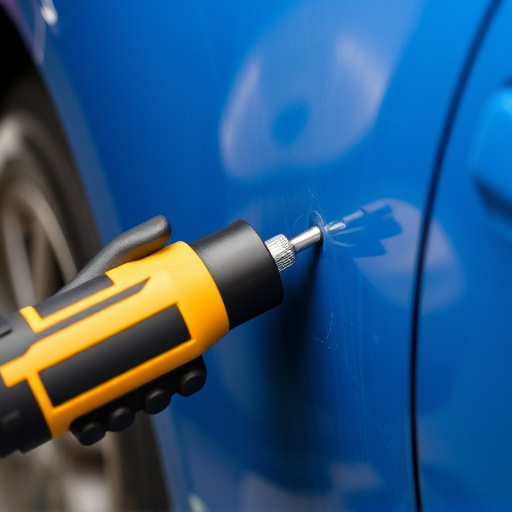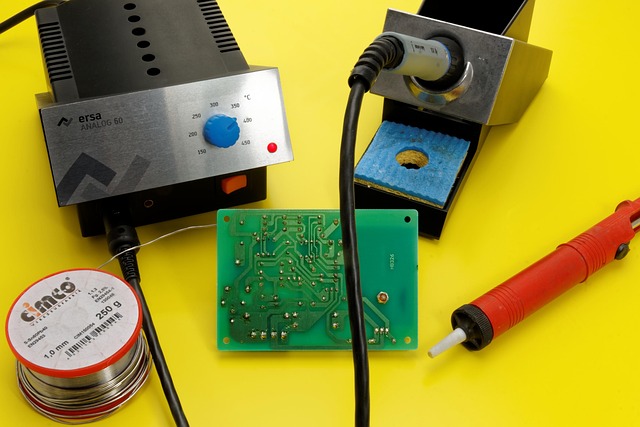Tesla's Thermal Management System maintains optimal vehicle temperatures through efficient heat exchange and strategic component placement, protecting electrical systems and ensuring passenger comfort. Regular checks are crucial to prevent issues, especially in extreme weather, impacting performance or requiring costly collision damage repairs. Optimizing thermal management checks enhances HVAC efficiency, saves energy, prevents part damage, and ensures Tesla longevity.
“Unveiling the inner workings of Tesla’s advanced thermal management system is a key step in understanding its innovative HVAC (Heating, Ventilation, and Air Conditioning) integration. This article delves into the intricate mechanisms that regulate temperature in Tesla vehicles, offering a comprehensive guide. From comprehending the core principles to exploring vital components, we’ll navigate through best practices for efficient thermal checks. By mastering these techniques, owners can ensure optimal performance, enhancing both comfort and energy conservation in their electric vehicles.”
- Understanding Tesla's Thermal Management System
- Key Components of HVAC Integration in Tesla Vehicles
- Optimizing Efficiency: Best Practices for Thermal Checks
Understanding Tesla's Thermal Management System

Tesla’s Thermal Management System is a sophisticated network designed to maintain optimal temperatures within the vehicle, ensuring both passenger comfort and the longevity of its advanced electrical components. At the heart of this system lies efficient heat exchange, where Tesla employs innovative techniques to manage heat generation and dissipation. This involves strategic placement of heaters and coolers, as well as advanced materials that facilitate temperature regulation.
A crucial aspect of Tesla’s approach is integrating these thermal management components seamlessly with the vehicle’s HVAC (Heating, Ventilation, and Air Conditioning) system. This integration ensures a balanced distribution of temperature-controlled air throughout the cabin, enhancing comfort while minimizing energy consumption. Regularly checking and maintaining this intricate system is vital, especially in extreme weather conditions, to prevent issues that could impact performance or require costly collision damage repair for auto body services.
Key Components of HVAC Integration in Tesla Vehicles

The integration of HVAC (Heating, Ventilation, and Air Conditioning) systems in Tesla vehicles is a complex yet vital process that contributes to both passenger comfort and vehicle efficiency. Key components include sophisticated temperature sensors, advanced control algorithms, and innovative heat exchangers designed to manage thermal energy flow effectively. These elements work in harmony to maintain optimal cabin conditions, even under extreme external temperatures.
During a Tesla thermal management check, collision repair centers or car body restoration specialists scrutinize these systems to ensure they operate seamlessly. This involves verifying the functionality of ductwork, air filters, and evaporators, while also checking for any leaks that could compromise the system’s efficiency. Regular maintenance and timely repairs are crucial in preserving the vehicle’s performance and ensuring a comfortable driving experience, ultimately enhancing customer satisfaction with their electric vehicles.
Optimizing Efficiency: Best Practices for Thermal Checks

Optimizing Efficiency through Tesla thermal management checks is a key aspect of ensuring your vehicle’s HVAC (Heating, Ventilation, and Air Conditioning) system operates at peak performance. Regular thermal checks help identify any inefficiencies or leaks within the system, which can significantly impact energy consumption and comfort levels. By addressing these issues early on, owners can save on energy costs and reduce their environmental footprint.
Best practices for Tesla thermal management checks involve a thorough inspection of all components, including radiators, condensers, and ductwork. Using specialized tools to detect temperature differentials and pinpoint problem areas is essential. Additionally, maintaining proper maintenance schedules recommended by Tesla or a trusted automotive technician can prevent significant damage to both the HVAC system and other related components like auto glass replacement or bumper repair, ensuring your vehicle’s longevity and optimal performance throughout its lifecycle, even after extensive automotive body work.
Tesla’s advanced thermal management system and HVAC (Heating, Ventilation, and Air Conditioning) integration are key to ensuring optimal vehicle performance and passenger comfort. By understanding these systems’ intricate workings and implementing best practices during thermal checks, we can enhance overall efficiency and drive experience. Regular maintenance and efficient cooling strategies are vital for Tesla owners, enabling them to navigate various climates while keeping their vehicles running smoothly.













